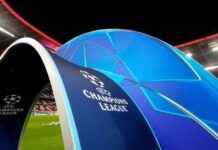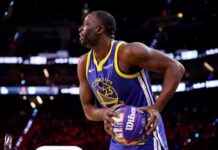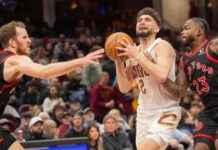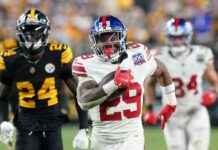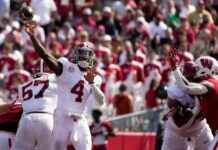Title: Yankees’ Homegrown Stars Shine Amid Angels Dysfunction
John, the Windup Newsletter ⚾ | This is The Athletic’s MLB newsletter. Sign up here to receive The Windup directly in your inbox. The Yankees are developing a track record of homegrown players, and the Angels continue their track record of homegrown dysfunction. Plus: Here in the real world, even our biggest heroes eventually stop showing up. I’m Levi Weaver, here with Ken Rosenthal. Welcome to The Windup! Really? Not really sure why this matters, but celestial beings don’t need sleep, I guess.
Have you ever wondered why MLB teams would play a day game on a weekday? Sunday, sure. But a Wednesday when school is still in session and people are working? Seems like a bad way to maximize attendance, doesn’t it? Well, there’s a reason. It’s called a getaway game, and it’s a courtesy to (at least) the opposing team, which has to travel after the game. If the game finishes around 4 or 5 p.m., the visiting team can be on a flight a couple of hours after the last pitch and get to the next city (or home) in time to get to sleep by midnight or a little after. But the Angels are starting tomorrow’s home game against the Pirates at 6:29 p.m. Let’s do a little math, all times estimates:
• 6:30 p.m. PT + 2:30 for the game = 9 p.m. PT • Two hours to get everything packed and drive to LAX (since the two closer airports have 10 p.m. curfews): = 11 p.m. PT • 3:40 to fly from LAX to Minneapolis = 2:40 a.m. PT (4:40 a.m. CT) • An hour to get to the hotel, get settled in = 5:40 a.m. CT First pitch against the Twins is 11 hours later. Pregame workouts, warmups, massages, meals, batting practice take at minimum a couple of hours. So … sleep fast, fellas. It’s one thing to have a reputation for doing this to visiting teams (the Astros and Orioles occasionally do this, too). But in this case, the Pirates are playing the Dodgers in Los Angeles the next day — they’re going to sleep just fine. So why would the Angels do this when the negative impact is only to their own players? Sam Blum investigates in this morning’s story. The organization’s statement — surprise! — did not contain any substance or really address the question whatsoever. But the players had some things to say. They don’t love it, and they’re saying so in some pretty unequivocal ways. One of these days, maybe we’ll dedicate a section in The Windup to all the ways in which the Angels have been creative in finding new avenues for dysfunction — not even counting the fact that they haven’t won a playoff game since 2009. But for today, we’ll just focus on the latest one. Good work by Sam to get the players on the record with their dissatisfaction. Ken’s Notebook: Yankees produce talent despite self-imposed hurdles From my latest story on how the Yankees have developed a homegrown core: The last time the Yankees drafted in the top 20 was in 2017, when they chose right-hander Clarke Schmidt at No. 16. In the seven drafts since then, the average position of their top pick was 25th. The average for the Braves was 19th, the Mets and Mariners 16th, the Orioles eighth. Part of this stems from the Yankees’ success — they’ve missed the playoffs only five times during general manager Brian Cashman’s 27-year tenure. And part of it stems from their spending. Their top pick in 2024 dropped 10 spots, to No. 26, after they exceeded the first luxury-tax threshold by more than $40 million. They will incur the same penalty in 2025, with their first pick falling to No. 39. The Yankees compromised themselves in other ways as well. Three times in the past five years, they signed free agents (Gerrit Cole, Carlos Rodón, Max Fried) who rejected qualifying offers, at the cost of second- and fifth-round selections and $1 million in international bonus pool space. The fewer picks a team makes, the less it can spend on domestic amateurs. The Yankees’ draft bonus pools the past five years averaged in the bottom five. No one should pity the Yankees for sacrifices that resulted from them flexing their financial muscle. They also whiffed with some of their first-rounders in the past decade (Blake Rutherford, TJ Sikkema, Anthony Siegler), often compensating for those mistakes with lower-round finds. Their current homegrown group is all the more impressive, considering their low draft positions effectively force them to play from behind. Virtually every team could have taken Aaron Judge, who was taken 32nd overall, Anthony Volpe, who went 30th, or Austin Wells, who went 28th. Will Warren was an eighth-round pick, Ben Rice a 12th-rounder. And while Jasson Domínguez was a $5.1 million international signing, Oswald Peraza and Oswaldo Cabrera and Gómez were relative bargains, at $175,000, $100,000 and $50,000, respectively. For all that, rarely is the Yankees’ farm system considered one of the best in the game. Earlier this year, The Athletic’s Keith Law rated it 21st, Baseball America 25th. Since 2020, the Yankees’ highest rank from BA was 10th, and its average was 16th. Law had them in his top 10 twice, but their average rank was 14th. A major reason? Trades. More here. Legends: Where have you gone, Nick Castellanos? Superman has existed since 1938. A year later, Batman debuted. Both superheroes have gone through countless iterations, reboots, and reimaginations, but even in their darkest hours, the legends persist. This is because they are — sorry to disappoint — imaginary. Here in the real world, legends do die, and even the avatars of youth succumb to the persistent confetti of days coming off the calendar like so many dying leaves. Ken Griffey Jr. is 55 years old. Tim Lincecum is 40. For more than 16 years, you could count on Cal Ripken Jr. being in the lineup. And then one day, he wasn’t. Today, we solemnly acknowledge the day when humanity stood in anticipation of the inevitable, waiting like so many Springfield Elementary School students turning in their seats to face Nick Castellanos and eagerly plead: Hit the home run, Nick! And who can blame us? The player who always hits home runs during major news stories has established quite a track record of doing exactly that. The intent here is absolutely not to make light of the passing of Pope Francis. But it’s newsworthy when the actual No. 1 prop bet in all of sports on Monday was for Castellanos to hit a home run in his first game after that news broke. Castellanos went 0-for-4 with two strikeouts in a 5-4 loss to the Mets. Superman did not grace the sky. Batman let the signal burn through the night. Bart never said the line. And so, we lean instead into the words of a member of another superhero universe … “A thing isn’t beautiful because it lasts.” Handshakes and High Fives The Dodgers’ offense has struggled a bit lately. It broke out for 10 runs last night … and Los Angeles still lost. Is the Death Star malfunctioning? It’s not Rocco Baldelli’s fault the Twins didn’t invest more in free agents, nor is it his fault that so many players are on the injured list. But the manager often bears the brunt of starts like this, and he’s aware he’s on the hot seat. After a rough start to the season, it looks like Mark Vientos is heating up. Will Sammon tells us what he’s doing differently. Brayan Bello made his 2025 debut last night for the Red Sox. It went pretty well, and that’s a good thing for Boston. Cristopher Sánchez left last night’s game with soreness in his forearm. While we wait for a diagnosis, it appears Ranger Suárez might be ready to step in and be the next guy up. Keith Law has a scouting notebook on Mets and Orioles prospects. I’m a couple of days late on this, but these two minor-league teams really took instant replay to an unbelievable new level last week. 🎙️ On the pods: • Hunter Greene, NL Cy Young Award contender? C. Trent Rosecrans joined the “Rates & Barrels” crew to discuss Greene’s step forward and the Reds’ improving rotation. • Padres manager Mike Shildt joined “Starkville” to give an update on Luis Arraez, talk up Fernando Tatis Jr., and discuss the contrasts between the Cardinals and Padres. (Stark also wrote up Shildt’s comments on first base safety.) Most-clicked in our last newsletter: Elise Devlin’s story on Bobby Witt Jr.’s mental performance training. 📫 Love The Windup? Check out The Athletic’s other newsletters. (Top photo: Jim Cowsert / Imagn Images)



